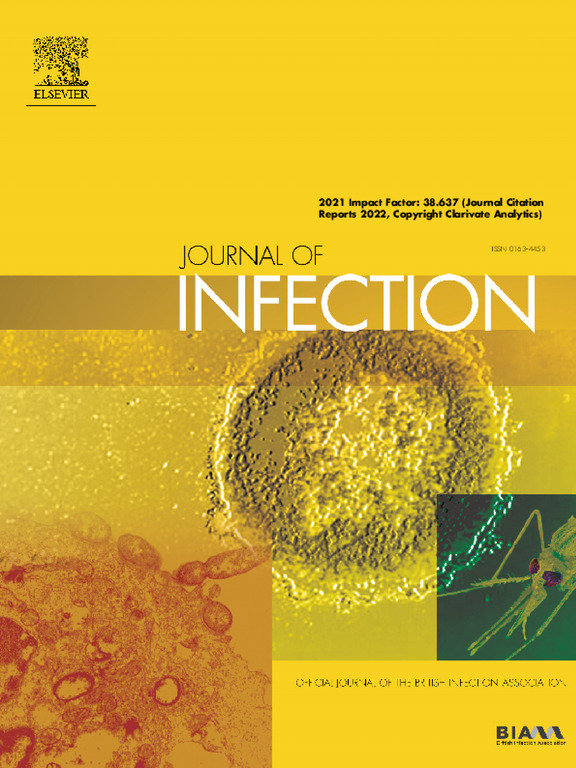Rapid and accurate diagnosis of urinary tract infections using targeted next-generation sequencing: A multicenter comparative study with metagenomic sequencing and traditional culture methods
IF 14.3
1区 医学
Q1 INFECTIOUS DISEASES
引用次数: 0
Abstract
Background
Urinary tract infections (UTIs) rank among the most prevalent bacterial infections globally. Traditional urine culture methods have significant limitations in detection time and sensitivity, prompting the need to evaluate targeted next-generation sequencing (tNGS) as a potential diagnostic tool.
Methods
The study included a discovery cohort of 400 suspected UTI patients (202 analyzed) and a validation cohort of 200 patients (110 analyzed). The study assessed detection time, concordance rates, ability to identify polymicrobial infections, and antibiotic resistance genes (ARGs). Both clear and turbid urine samples were evaluated across different clinical settings.
Results
In the discovery cohort, tNGS demonstrated 96.5% concordance with culture-positive samples, while showing superior specificity in culture-negative specimens (53.1% vs 28.1% for mNGS). Detection time for tNGS (12.89 h) was notably shorter than mNGS (17.38 h) and traditional culture (61.48 h). tNGS exhibited remarkable capability in identifying polymicrobial infections (55.4% of samples), significantly outperforming both mNGS (27.7%) and traditional culture methods, which failed to detect any co-infections. The method showed particular strength in detecting fastidious organisms like Ureaplasma parvum and fungal species such as Candida tropicalis. For antibiotic resistance prediction, tNGS detected more ARGs (52.67% vs 41.22% for mNGS) and achieved 100% sensitivity for vancomycin and methicillin resistance in Gram-positive pathogens. The validation cohort confirmed tNGS's robust performance, maintaining high concordance rates for both culture-positive (90.00%) and culture-negative samples (55.00%), demonstrating consistent reliability across different clinical settings
Conclusions
tNGS demonstrates advantages in rapid and accurate UTI diagnosis, particularly in detecting polymicrobial infections and analyzing antibiotic resistance genes. It shows promise as an effective complementary tool for UTI diagnostics.
利用靶向新一代测序快速准确诊断尿路感染:与宏基因组测序和传统培养方法的多中心比较研究
背景:尿路感染是全球最常见的细菌感染之一。传统的尿液培养方法在检测时间和灵敏度上存在明显的局限性,因此需要评估靶向下一代测序(tNGS)作为一种潜在的诊断工具。方法:本研究包括400例疑似UTI患者的发现队列(分析202例)和200例患者的验证队列(分析110例)。该研究评估了检测时间、一致性率、识别多微生物感染的能力和抗生素耐药基因(ARGs)。在不同的临床环境中评估清尿和混浊尿样本。结果:在发现队列中,tNGS与培养阳性样本的一致性为96.5%,而在培养阴性样本中表现出更高的特异性(53.1% vs . mNGS的28.1%)。tNGS的检测时间(12.89h)明显短于mNGS (17.38h)和传统培养(61.48h)。tNGS在检测多微生物感染(55.4%)方面表现出色,显著优于mNGS(27.7%)和传统培养方法(未能检测到任何共感染)。该方法在检测细小脲原体等挑剔的生物和热带念珠菌等真菌物种方面表现出特别的优势。在抗生素耐药预测方面,tNGS的ARGs检出率(52.67% vs 41.22%)高于mNGS,对革兰氏阳性病原菌万古霉素和甲氧西林耐药的敏感性达到100%。验证队列证实了tNGS的强大性能,在培养阳性样本(90.00%)和培养阴性样本(55.00%)中保持较高的一致性,在不同的临床环境中显示出一致的可靠性。结论:tNGS在快速准确的UTI诊断方面具有优势,特别是在检测多微生物感染和分析抗生素耐药基因方面。它有望成为尿路感染诊断的有效补充工具。
本文章由计算机程序翻译,如有差异,请以英文原文为准。
求助全文
约1分钟内获得全文
求助全文
来源期刊

Journal of Infection
医学-传染病学
CiteScore
45.90
自引率
3.20%
发文量
475
审稿时长
16 days
期刊介绍:
The Journal of Infection publishes original papers on all aspects of infection - clinical, microbiological and epidemiological. The Journal seeks to bring together knowledge from all specialties involved in infection research and clinical practice, and present the best work in the ever-changing field of infection.
Each issue brings you Editorials that describe current or controversial topics of interest, high quality Reviews to keep you in touch with the latest developments in specific fields of interest, an Epidemiology section reporting studies in the hospital and the general community, and a lively correspondence section.
 求助内容:
求助内容: 应助结果提醒方式:
应助结果提醒方式:


